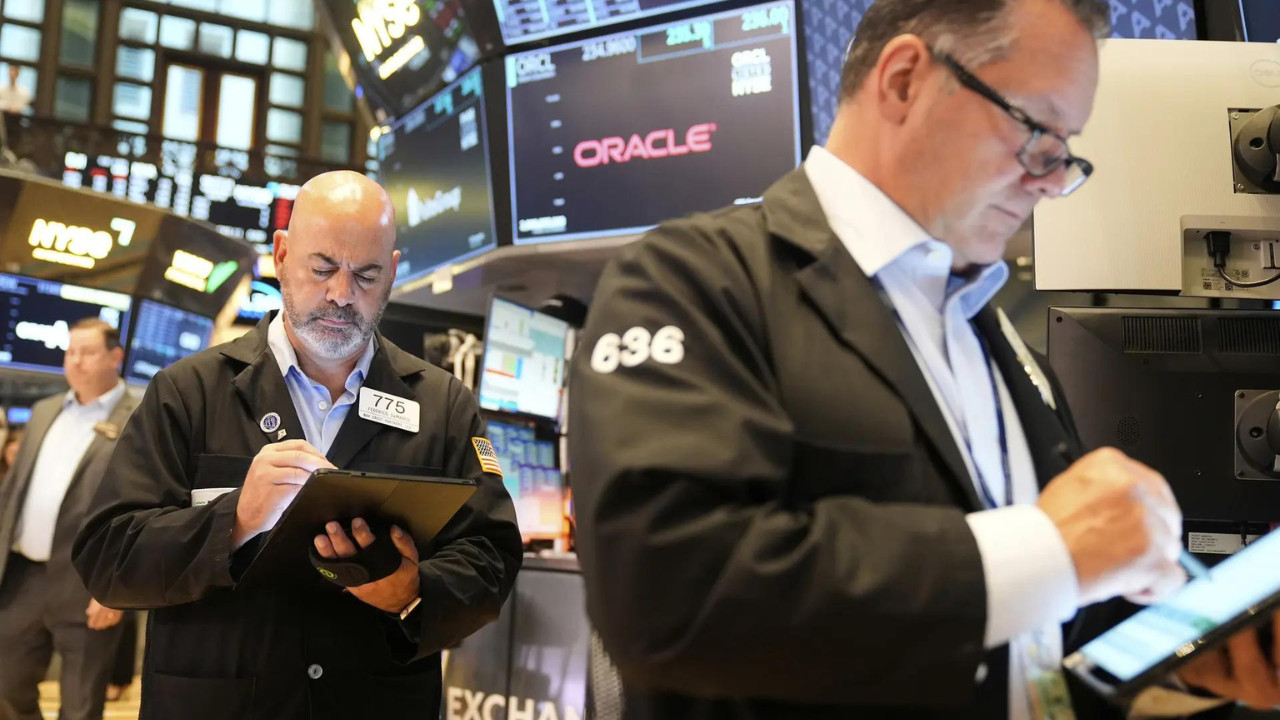US stock indices remained steady near record highs, awaiting key events like Big Tech earnings and a Federal Reserve meeting. Trade deal optimism between the US and EU provided calm, despite unresolved details. Intel shares fell, while Deckers Brands surged. Global equities showed mixed momentum, influenced by trade talks and corporate developments.
Navigating the Market Maze: What’s Driving Wall Street’s Latest Moves?
The air on Wall Street feels…different. It’s a blend of cautious optimism and underlying anxiety. After a period of relative calm, the market’s been throwing some curveballs lately, leaving investors scrambling to understand what’s really going on. Forget the talking heads shouting predictions – let’s dive into the actual currents shaping the financial landscape and impacting your portfolio.
Interest Rate Whispers and the Fed’s Next Move
The Federal Reserve, that often-opaque entity, is once again front and center. All eyes are peeled, all ears are straining to decipher the signals about future interest rate adjustments. The big question hanging in the balance: will they hold steady, signaling a possible victory in the inflation fight, or will they need to maintain their hawkish stance? The answer, seemingly, has a domino effect on everything else.
For months, the narrative has been about taming inflation, and the Fed’s aggressive rate hikes were the primary weapon. These hikes, while necessary to cool down the economy, also created headwinds for growth. Now, the debate rages on. Is inflation truly under control, or is it just taking a breather before potentially resurging? The Fed’s decision hinges on the incoming economic data – data that’s becoming increasingly mixed, adding layers of complexity to the situation.
The anticipation surrounding the Federal Reserve’s decisions often causes volatility in the stock market. Uncertainty breeds caution, and investors tend to react swiftly to perceived shifts in the Fed’s approach.
Tech’s Rollercoaster Ride: AI Hype vs. Real-World Results
The tech sector, the darling of the market for so long, is experiencing a unique dynamic. Artificial intelligence, or AI stock, is the buzzword du jour, fueling excitement and, frankly, some irrational exuberance. Companies even tangentially related to AI are seeing their stock prices skyrocket, regardless of their actual earnings or revenue. Is it a bubble waiting to burst? That’s the million-dollar question.

While AI undoubtedly holds immense potential, the market’s current fascination feels somewhat divorced from reality. Many companies are still in the early stages of developing and deploying AI solutions. The path to profitability is far from clear, and the competitive landscape is rapidly evolving. Investors need to differentiate between genuine innovation and marketing hype. The reality is that widespread adoption of AI is still years away and comes at a price, which is capital expenditure on R&D and talent acquisition.
The market’s obsession with AI has created a two-tiered system within the tech sector. Those perceived as AI leaders are thriving, while others are struggling to keep up. This divergence highlights the risk of investing solely based on trends, without carefully evaluating the underlying fundamentals of each company.
Global Trade Tides: Shifting Alliances and Economic Winds
Beyond domestic issues, global trade dynamics are also playing a significant role. The ongoing tensions between major economic powers, coupled with evolving trade agreements, create a sense of uncertainty that ripples through the markets. Supply chain disruptions, tariffs, and geopolitical risks all contribute to the overall volatility.
Companies with significant international exposure are particularly vulnerable to these external factors. Changes in trade policies can dramatically impact their profitability, forcing them to adapt quickly or face significant losses. Investors need to closely monitor these global developments and assess their potential impact on their portfolios. You can also check other posts on our site that cover global economics and investment strategies to navigate these uncertain times.
The Bottom Line: Navigating a Complex Landscape
Wall Street’s current state is a complex interplay of factors – interest rate expectations, AI hype, and global trade winds. There’s no crystal ball to predict the future with certainty, but understanding these underlying forces is crucial for making informed investment decisions.
Instead of blindly chasing the latest trends, investors should focus on fundamental analysis, diversification, and a long-term perspective. Remember, market volatility is a normal part of the investment cycle. By staying informed, remaining disciplined, and focusing on your individual financial goals, you can navigate the market maze with confidence. Staying updated on trends like AI stock is beneficial, but not at the cost of sound investment judgement.







